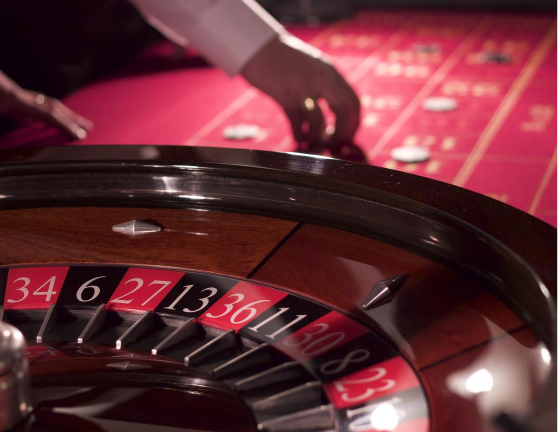Understanding Street Bets in Roulette
If you’ve played roulette before, then you will no doubt be aware of the basic bet types that are available to players.
Red or black. Odd or even. High or low. First, second or third dozen. These are the so-called ‘outside’ bets, as that’s where you’ll find them on the roulette betting board.
Alternatively, there are the ‘inside’ bets – straights, splits, corners, baskets and so on. To wager on these combinations, you place your chips on the bet board (sometimes known as the ‘racetrack’) in the position that coincides with your chosen wager type.
However, what many newcomers to roulette don’t know is that there is another inside bet type, known as ‘the street’, that can be utilized.
In this guide to roulette street bets, we’ll look at exactly what these are, how to wager on them, and their win probabilities and payouts. We’ll also discuss some strategies you can deploy if you want to bet on the street.
What Are Street Bets?
If you look at the roulette racetrack from the side, you will notice that the numbers are displayed in a grid that is 12 squares long and three squares high.
This represents every single number that is available in roulette from one to 36, with zero (where applicable) enjoying a different position on the racetrack.
It’s the vertical lines of the racetrack that depict the various street bets in roulette. Take a look for yourself the next time you play – you’ll notice these trios of numbers shown together vertically:
- 1-2-3
- 4-5-6
- 7-8-9
- 10-11-12
- 13-14-15
- 16-17-18
- 19-20-21
- 22-23-24
- 25-26-27
- 28-29-30
- 31-32-33
- 34-35-36
These are all of the roulette street bets that you can wager on. This wager type is sometimes known as line or row betting, or even ‘Transversale Plein’ if you’re playing French roulette, but for the most part it is referred to as street betting.
Street Bet Basics
As stated above, there are 12 different street bets roulette players can place on the racetrack. The advantage here is that it doesn’t matter which of your three numbers land, as the payout is the same for any of them.
For example, if you wager on the 19-20-21 street and the ball lands in 19, then your street bet is a winner.
To place street bets, roulette players should position their chip on the line at the end of the lowest number in their street. For instance, if you wanted to wager on the 4-5-6 street, you would drop your chip on the outer grid line marking the end of the number four. This simply lets the croupier know your intention to bet on that combination of numbers.
You only need to place one chip to confirm your street bet. Don’t be tempted to cover all three numbers in your street – these chips will be considered as wagers on the individual numbers, which, of course, have different payouts and win probabilities.
If you are playing online roulette, you will place your street bets by clicking on the line of the lowest number in your desired street. Occasionally, you might find that your online roulette game has a designated section on its racetrack for street betting.
Probability and Payouts
When you place a street bet, you are wagering on the possible outcome that one of your three numbers will be the winner when the ball comes to rest on the roulette wheel.
The standard roulette wheel has 36 possible numbers – other variants of the game offer 37 or even 38 numbers, but usually you are betting on your three numbers out of a possible 36. That 3/36 probability can be better represented as 1/12 (8.33%), which shows the likelihood of a number in your street landing.
As with any casino game, the house has to have an edge. This is exemplified by the payout for winning street bets, which is 11:1. So, if you wagered $10 on a street bet, your total return would be $120 ($110 in winnings, with your $10 stake returned).
Of course, if your street bet doesn’t win, then your chips are taken, and your stake is lost.
Strategies and Usage
One of the interesting things about roulette street bets is that you can wager on more than one street with any given spin of the wheel.
So, if you were to bet on four streets – for example, 1-2-3, 4-5-6, 7-8-9 and 10-11-12 – you would win should any of those numbers land.
This betting strategy is known in some parts of the world as ‘Dutching’, with the main advantage being that you can increase your potential win probability while still yielding a profit should any of your numbers land.
If you wagered four street bets in roulette, you would have 12 active numbers in play – that’s a theoretical win probability of 12/36 (33.32%), or one in three. As for your payout, this would be revised so that you win at around 2.75:1.
There is plenty of discourse online about the merits and drawbacks of betting on multiple streets. While doing so enhances your theoretical win probability, you also increase your stake – so, if your ‘Dutched’ street bet doesn’t win, your loss is greater. Should you lose several consecutive bets, you could see how and why this ‘Dutching’ system comes with a note of caution.
However you choose to bet when playing roulette, it’s likely that you will initially opt for a flat staking plan – that is, you wager the same amount on every single spin of the wheel. For roulette beginners, this is a smart way to play it.
As you become more experienced, you may consider adopting one of the staking systems that some advanced roulette players choose to use. One of the most popular of these is the Kelly criterion, devised by noted mathematician (and occasional blackjack player) John Larry Kelly Jr.
Kelly came up with a formula that would enable bettors, be it for roulette, blackjack, sports betting or even stock trading, to determine how much of their bankroll to wager on each bet. The calculation is:
f = bp – (1-p) / b
The ‘f’ stands for fraction, as in what fraction of your bankroll to wager. The ‘b’ is the odds you are taking, while ‘p’ is your theoretical probability of winning – all numbers you know when placing roulette street bets, as a single street has a 1/12 chance of landing at odds of 11:1. You can alter the numbers that you plug into the formula if you wager on multiple streets with a single spin of the wheel.
The concept behind the Kelly criterion is that it provides an insight into the ideal amount to stake per roulette wheel spin, based upon your bankroll size and your win probability compared to the odds taken. Theoretically, it is designed to protect players against potential losses, while allowing them to maximize their gaming time with a sensible, structured approach to wagering.
Of course, the downside is having to calculate the formula for every single spin – something that casual players would probably be happy to avoid doing.
Alternative staking systems include the Martingale and Fibonacci approaches. The Martingale system is progressive in nature, which means that you increase your bet size after every loss so that if you do land a win, it covers all previous losses.
To keep the math simple, let’s say that you start out betting $1 on red – the Martingale strategy is designed with even-money bets (or as close to them as possible) in mind. If you win, you take your winnings and bet $1 next time. If you lose, you double your stake: $2 becomes $4 and then $8 if you lose four times in a row.
| Bet Number | Stake Size | Win? | Lose? |
| 1 | $1 | Stake $1 next | Move to bet 2 |
| 2 | $2 | Stake $1 next | Move to bet 3 |
| 3 | $4 | Stake $1 next | Move to bet 4 |
| 4 | $8 | Stake $1 next | Move to bet 5 |
| 5 | $16 | Stake $1 next | Move to bet 6 |
| 6 | $32 | Stake $1 next | Move to bet 7 |
| 7 | $64 | Stake $1 next | Move to bet 8 |
| 8 | $128 | Stake $1 next | Move to $256 |
If you eventually win during this spell, your winnings (calculated at even-money odds) should cover all of the losses that have come before in the chain. At this point, you return to the $1 stake starting point.
Although the math behind the Martingale system is solid enough, eagled-eyed readers will have noticed the major problem with this staking plan. Starting out with a $1 bet, it only takes seven consecutive losses before you find yourself betting a considerable $128 on your eighth spin to satisfy the demands of this strategy. For many players, that is simply beyond their budget.
If we roll on a couple more losses, by bet 10 the stake becomes an eye-watering $512! For this reason, the Martingale system does require a substantial budget that the player can afford to lose.
The Fibonacci staking plan, meanwhile, is another ‘progressive’ system that requires players to aggressively increase their stake after every loss. It uses units rather than monetary size. Let’s say that for you, one unit equals $1.
Here’s what the Fibonacci sequence looks like:
1-1-2-3-5-8-13-21-34-55-89-144-233
You may have noticed the pattern already: the number is the sum of the two numbers immediately preceding it – e.g., 3 is 1-2, 5 is 2-3, 8 is 3-5 and so on. The number dictates how many units you bet next after every loss, with the idea being that you recover your losses – and at a little profit – when/if you next win.
If you do win, the idea is that you go back two numbers in the chain before carrying on as described in the sequence above.
Like the Martingale, Fibonacci tends to work more effectively with even-money bets, which, in roulette terms, is as close as you’re going to get (red or black, odd or even, etc.). You could ‘Dutch’ together multiple street bets to get close to 1:1, but you will need to recalculate your staking plan based on this extra outlay.
In conclusion, roulette strategies are not for everyone, but there is logic to ‘Dutching’ multiple roulette street bets together. However, you should gather some experience and playing time before exploring this strategy.




